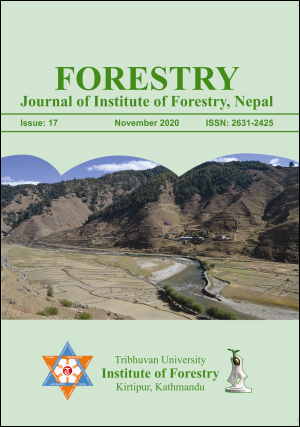Wildfire Risk Zonation of Sudurpaschim Province, Nepal
DOI:
https://doi.org/10.3126/forestry.v17i0.33633Keywords:
Fire risk zonation, remote sensing and GIS, wildfire, Siwalik regionAbstract
Wildfire is one of the major destructive hazards which have significant effect on environment, society, and economy. However, limited studies have been carried out on spatial and temporal distribution of wildfire, especially in developing countries like Nepal. The objective of this study was to assess wildfire risk zonation of Sudurpaschim province of Nepal by applying Remote Sensing and GIS. Sudurpaschim province has been divided into four fire risk zones i.e., high, moderate, low and no risk zone. In Sudurpaschim province, about 30.84% area falls under high fire risk zone followed by moderate risk (58.30%), low risk (10.13%) and no risk (0.72%). Among five physiographic regions, Siwalik region is more susceptible to fire due to various factors, such as deciduous forest, topography, terrain, etc. From 2012 to 2019, about 44,342 fire incidences were reported in this province. Approximately 88% wildfire was recorded in spring, the season being dry. Overall, geographically Siwalik region and temporarily spring season should be in high priority for developing and implementing wildfire management activities in Sudurpaschim province.
Downloads
Downloads
Published
How to Cite
Issue
Section
License
© Tribhuvan University, Institute of Forestry




